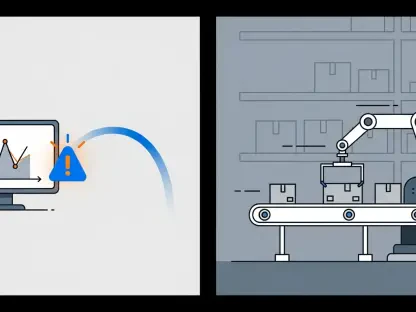The economy is marching into an AI-shaped future in which algorithms touch workflows, infrastructure, and trust at once, and the scale of change has already altered how companies build, hire, and secure themselves against new threats. AI has shifted from niche experiment to general-purpose capability, cutting across manufacturing lines, financial analysis, medical imaging suites, and classrooms. This breadth is why debate has grown louder: dramatic productivity gains are arriving alongside rising electricity demand, tougher cybersecurity challenges, and a consolidation of power among the firms that own compute and foundational models. The decisive factor will not be the technology alone but the choices made about governance, market design, and energy strategy—choices that determine who benefits, who bears costs, and how fast society adapts.
The Promise: Productivity, Health, Education, and Discovery
Across industries, early deployments show that automation is strongest where tasks are repetitive, time-sensitive, or hazardous. Assembly lines now use vision models to catch defects at machine speed, while logistics networks route deliveries around disruptions with less idle capacity. In offices, AI-generated drafts and summaries trim hours from documentation and compliance, freeing specialists to focus on decisions that hinge on judgment. Gains compound as models move from pilot to production: turnaround times shrink, error rates fall, and teams reallocate work toward analysis, design, and oversight. The most durable benefits arise when tools complement skilled workers, turning rote steps into background processes and elevating what humans alone do well.
Healthcare and education underscore how augmentation can scale quality without erasing the human role. Imaging algorithms flag anomalies that clinicians review, improving triage and throughput while keeping diagnosis accountable to licensed professionals. Predictive models surface risk earlier in cardiology, oncology, and population health, which boosts preventive care and reduces costly interventions. In classrooms, adaptive systems tune lessons to each learner’s pace, lifting engagement and narrowing performance gaps that standard curricula often widen. Science and R&D also accelerate as AI parses complex datasets and proposes candidates worth testing, shortening the distance from hypothesis to application. In these arenas, complementary deployment—not replacement—drives the largest, most reliable wins.
Near-Term Risks: Work, Energy, Security, and Power
Employment effects are shifting toward knowledge work, where AI can standardize and speed tasks once buffered by credentialing and tacit expertise. Software development illustrates the pivot: code assistants automate boilerplate, search repositories faster than humans, and push changes through pipelines with fewer handoffs. That raises output per engineer but compresses demand for some traditional roles and moves value toward system design, integration, and risk management. Legal, accounting, and customer support face similar dynamics as drafting, summarizing, and translation become cheaper. Where roles are decomposed into tasks, the commodity parts may lose pricing power unless organizations redesign jobs to emphasize oversight, domain context, and client-facing work that technology cannot credibly replace.
The infrastructure footprint is expanding just as quickly. Data centers anchor the AI boom, and their power needs are rising, yet build strategies are trending toward low-carbon sources because speed, reliability, and cost now align with solar-plus-storage and grid-scale contracts. This tilt is pragmatic: new capacity must come online quickly, operate continuously, and meet investor and regulatory scrutiny. While absolute demand grows, procurement patterns are accelerating renewable projects, transmission upgrades, and on-site storage that smooths variability. Security risks add another layer. Adversaries are already using AI to craft convincing phishing, automate vulnerability discovery, and scale fraud. Defenders are responding with AI-driven detection, continuous testing, and incident reporting that treats resilience as a core design parameter.
Closing The Governance Gap
Corporate controls have lagged the speed of adoption, and that mismatch is where small mistakes scale into public harms. Organizations need accountable owners for model outcomes, documented data lineage, and risk reviews that weigh accuracy, bias, privacy, and environmental cost before deployment. Independent audits, structured red-team exercises, and staged rollouts reduce blind spots, while post-deployment monitoring catches drift and emergent behavior. Disclosure also matters: clear statements of system capabilities, limitations, and energy use help customers and regulators compare approaches. Market rules can reinforce these norms by rewarding openness, interoperability, and access to compute and high-quality data, while antitrust enforcement keeps foundational chokepoints from hardening into permanent gatekeepers.
The path forward was practical rather than utopian. Companies tightened governance by tying executive incentives to safety and impact metrics, boards carved out dedicated oversight for AI risk, and procurement favored vendors that proved robustness with transparent evaluations. Policymakers prioritized baseline security standards, incident reporting, and environmental disclosures that steered buildouts toward cleaner power. Labor strategies emphasized reskilling, certification, and redesigned roles that elevated judgment over routine. Together, these steps aligned innovation with accountability: complementarity was encouraged where it raised quality, commoditization was offset by new responsibilities, and rising energy demand doubled as a lever for faster renewable deployment. In that framing, oversight had functioned as the force multiplier that made gains exceed risks.









